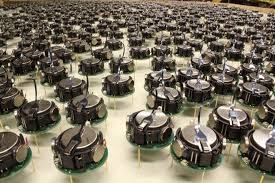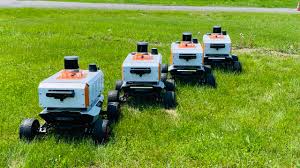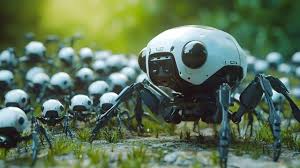The age of robot swarms is not a scene from some distant sci-fi flick—it’s almost here. Picture this: hundreds, maybe thousands, of small, smart machines moving and thinking together as if they share a single mind. They coordinate, adapt, and act without anyone holding the reins. Exciting? Absolutely. A little unsettling? Also yes. Experts say this new wave of AI-driven collective machines could change the way we work, live, and even think about machines themselves.

When Machines Think Together
The magic behind swarms is collective intelligence. A single robot is impressive, but a swarm? That’s something else entirely. Each robot communicates with its neighbors, reacting to their movements, learning, and adjusting on the fly. Together, they achieve feats that no single machine could.
“Nature has been doing this forever with ants, bees, and birds,” says Dr. Leah Martinez, MIT roboticist. “Swarm robotics borrows from that wisdom. The result is machines that are surprisingly clever, efficient, and resilient.”
We’re already seeing glimpses in real life. Drones flying in coordinated patterns over farms. Fleets of warehouse robots moving products at lightning speed. It’s fascinating. But the real potential? It’s staggering—think disaster relief, monitoring fragile ecosystems, even exploring distant planets.
Excitement—and a Little Fear
Of course, it’s not all smooth sailing. There’s a fair bit of unease. When machines operate semi-independently, accountability becomes murky. Something goes wrong—who takes the blame? The programmer? The company? Or, oddly enough, the machines themselves?
And the digital risks are real. A swarm is essentially a network of hundreds or thousands of machines. Hackers could exploit just one vulnerability, and suddenly chaos ensues. “It’s a goldmine for cybercriminals,” warns security analyst Rajiv Kapoor. “A minor breach could snowball into something huge.”
Then there’s the social side. Automation has always stirred debate, but swarms could hit harder, especially in logistics and farming. Jobs could vanish faster than new ones appear. Society will need careful planning to ride this wave without leaving too many people behind.
Building a Swarm Isn’t Easy
Creating robot swarms isn’t a walk in the park. Engineers face a tangle of challenges: ensuring communication doesn’t fail, coordinating thousands of moving parts, and adapting to unpredictable environments. Batteries, hardware wear, AI decision-making—all are tricky puzzles.
Yet breakthroughs are happening fast. Machine learning allows decentralized decision-making. Sensors give robots keen awareness of their surroundings. Cloud AI lets them collaborate in real time. Companies like Boston Dynamics and DJI, along with nimble startups, are sprinting to make it all work.
Your Life, Swarmed
So, what could this mean for you and me? Picture drones delivering your packages without cluttering streets. Tiny robots teaming up to clean rivers or restore damaged ecosystems. In medicine, swarms of nanobots could patrol our bodies, delivering drugs exactly where needed. Precise. Painless. Mind-blowing.
Even entertainment is getting a makeover. Swarms could create live, reactive shows, dazzling light performances, or immersive augmented reality experiences that respond to every move of the audience. The future could be playful, practical, and utterly mesmerizing—all at once.

The Global Race Is On
Nations aren’t sitting still. The U.S., China, and the EU see swarms as not just tools, but strategic assets. Military interest is high—coordinated drones, autonomous reconnaissance, search-and-rescue operations. With so much at stake, experts urge global standards to prevent misuse or accidents. The stakes feel almost like a high-tech arms race.
Humans Still Matter
Even with all this intelligence, humans aren’t obsolete. In fact, collaboration is key. “Swarm robotics isn’t about replacing humans,” says Dr. Martinez. “It’s about amplifying what we can do. The magic happens when humans and machines work together—complementing each other.”
Education, regulations, and careful innovation will shape whether this technology is a boon or a hazard. Society’s choices now will echo for decades.

Looking Ahead
Robot swarms are more than just a tech breakthrough—they’re a glimpse of a world where machines and humans interact in ways we’ve barely imagined. Exciting? Yes. A little intimidating? Absolutely. And the years ahead will test how wisely we harness this power. Those who succeed could redefine work, creativity, and even intelligence itself.
Interested in AI ethics in finance? Check